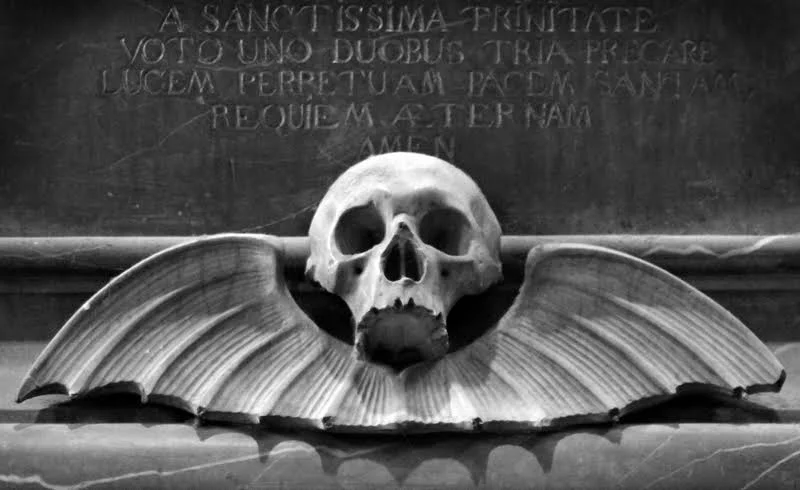The Origin of the Jack-O'-Lantern
(Emily Wayland / Singular Fortean Society)
The origin of the jack-o’-lantern can be traced back to at least the 16th century in Ireland and stories of a roguish con man known as Stingy Jack.
As the story goes, Stingy Jack was a drunkard known for using his silver tongue to manipulate people into getting what he wanted. The Devil, having heard of this evil man and his power of persuasion, wanted to see for himself whether or not Jack could live up to his reputation. So, one night, the Devil positioned himself on the cobblestone path down which he knew Jack would be drunkenly strolling, and he waited.
Sure enough, along came Stingy Jack, who recognized the Devil by his grimaced countenance and knew he must have come for his soul. Not ready for Hell, Jack hatched a plan; he asked the Devil to let him get drunk at the pub one last time. The Devil agreed, and he and Jack went to the pub, where Jack downed pint after pint. At the end of the night, when it came time to settle their tab, Jack asked the Devil if he wouldn’t mind paying—saying that the Devil could easily just turn himself into a silver coin, turning back after the purchase and being out nothing in return.
The Devil agreed, but Jack ran out on the bill rather than settle up, placing the Devil—as a silver coin—in his pocket. Unfortunately for the Devil, also in Jack’s pocket was a crucifix, which rendered him powerless and prevented him from changing back to his regular form. Stingy Jack agreed to free the Devil, but on one condition: he not return for Jack’s soul for ten years.
In ten years time the Devil was back for Stingy Jack’s soul. Jack once again stumbled upon the Devil on a lonely cobblestone path, but before he could be led to Hell, he asked for an apple to sate his hunger before being eternally damned. The Devil obliged and climbed a tree to retrieve the fruit. While he was up there, clever Jack quickly carved a cross in the tree’s trunk, trapping the Devil once more. This time, Jack made the Devil agree to never take his soul to Hell. The Devil agreed.
After years of hard drinking, Jack finally died, only to find that his many sins had disqualified him from entering Heaven. Desperate, Jack went to the gates of Hell, hoping to be admitted into some section of the afterlife. But the Devil remembered their bargain and turned Jack away, telling him to find his own Hell and giving him an ember to light his way. Jack placed the ember in a large, carved turnip—what would be known as a rutabaga in the United States—and was doomed to wander the world, forever trapped between Heaven and Hell.
By the mid-17th century, people were using the term jack-o’-lantern—a contraction of “Jack of the lantern”—to refer to any man carrying a lantern. Not long after that, it caught on as a term to refer to any manner of weird light seen near ground level—phenomena also often referred to as will-o’-the-wisps, faerie lights, fool’s fire, and corpse candles. By the 19th century, turnips, potatoes, and beets were being carved with menacing faces and used as lanterns in Ireland to scare off Stingy Jack and other wandering spirits.
Since Halloween—or All Hallow’s Eve, the day before the Catholic holiday All Saints’ Day—falls on the traditional date of Samhain, an ancient celebration marking the end of summer and a time when the souls of the dead were said to return, it’s only natural that the carving of lanterns to ward off evil spirits be incorporated into the holiday. When the Irish emigrated to North America, they brought the tradition with them, and it wasn’t long before the continent’s native pumpkins were noticed as an excellent gourd out of which to carve a lantern. Like Halloween itself, the tradition continued to spread, until the carving of pumpkins into lanterns became synonymous with the fall holiday.
To report your own encounter with the impossible, reach out to us directly at the Singular Fortean Society through our contact page.
If you enjoyed this article and would like to support the Singular Fortean Society, please consider becoming an official member by signing up through our Patreon page—membership includes a ton of extra content and behind-the-scenes access to the Society’s inner workings.




















